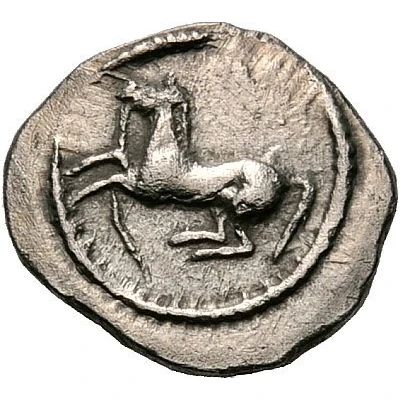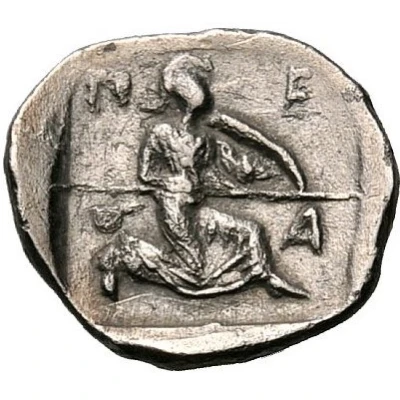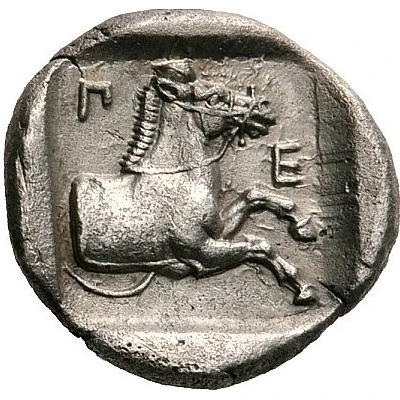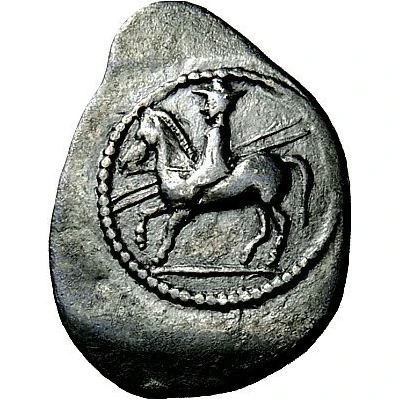
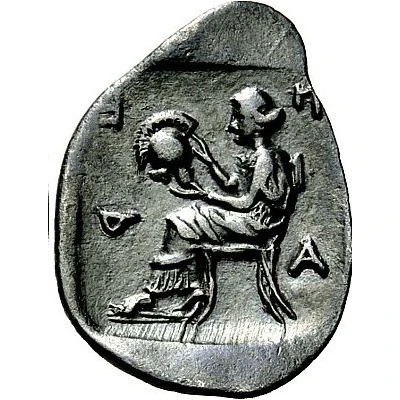

© Nomos AG
Trihemiobol 450 BC - 430 BC
| Silver | 1.36 g | - |
| Issuer | Perrhaiboi (Thessaly) |
|---|---|
| Type | Standard circulation coin |
| Years | 450 BC - 430 BC |
| Value | Trihemiobol (¼) |
| Currency | Drachm |
| Composition | Silver |
| Weight | 1.36 g |
| Shape | Round (irregular) |
| Technique | Hammered |
| Demonetized | Yes |
| Updated | 2024-10-10 |
| Numista | N#170894 |
|---|---|
| Rarity index | 100% |
Reverse
Athena (?), draped, seated to left on high-backed chair, holding crested, Corinthian helmet in both hands
Script: Greek
Lettering: Π Ε Ρ Α
Comment
Moustaka 46 var.
Interesting fact
The Trihemiobol coin from Perrhaiboi (Thessaly) was used as a form of currency in ancient Greece during the 5th century BC. Its name "Trihemiobol" comes from the Greek words "tri", meaning three, and "hēmi-", meaning half, referring to the coin's value being equal to half of a drachma, the standard unit of currency at the time. Despite being made of silver, the Trihemiobol was not a high-denomination coin, but it was still widely used in everyday transactions.
